Snake plants (Sansevieria spp.), also known as mother-in-law’s tongue, are one of the most popular houseplants due to their architectural beauty and almost indestructible nature. Native to West Africa, these hardy succulents thrive indoors with minimal care. But to truly help them thrive—not just survive—choosing the right pot and soil mix is crucial.
In this guide, we’ll walk you through everything you need to know about selecting the best pots and soil for snake plants, including tips for drainage, material options, and custom soil recipes.
Why Pot and Soil Choice Matters
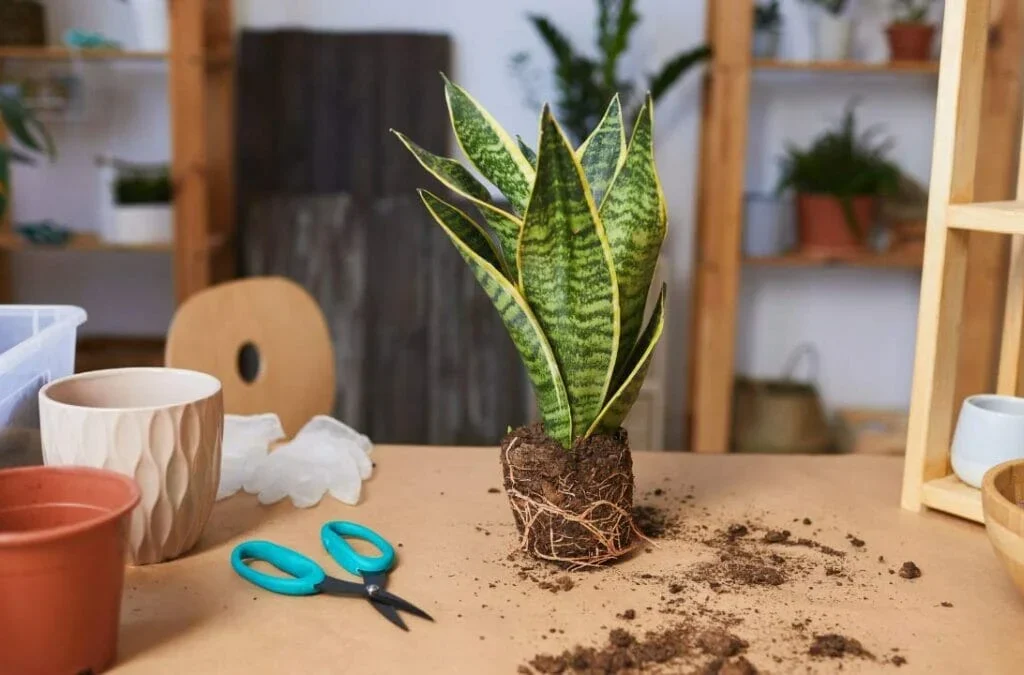
Despite their hardiness, snake plants are highly sensitive to overwatering and poor drainage. Incorrect pot or soil choices are the leading causes of problems like root rot, yellowing leaves, and stunted growth. Choosing the right combination ensures proper airflow, water retention, and root health.
Best Pots for Snake Plants
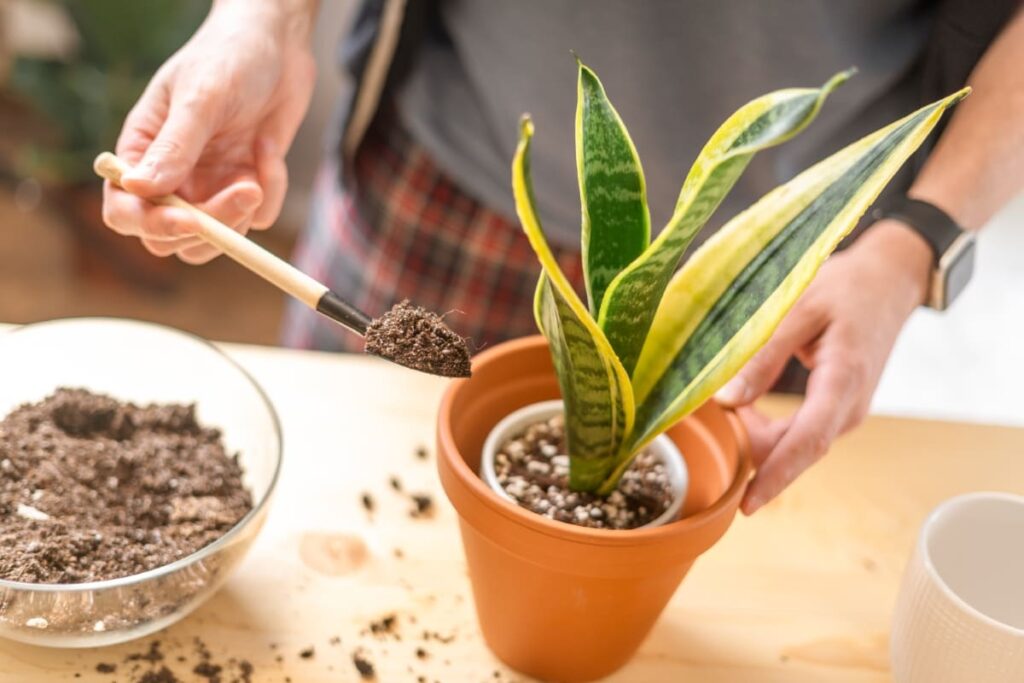
Let’s begin with the container. Here’s what you should look for:
1. Drainage Holes Are a Must
Snake plants hate soggy soil. Always use pots with at least one drainage hole. Without it, water collects at the bottom, leading to root rot and fungal issues.
2. Material Matters: Terracotta is Ideal
- Terracotta (clay pots): These are porous, allowing excess moisture to evaporate. This keeps the roots dry and mimics the arid climate snake plants prefer.
- Ceramic pots: Stylish and often glazed, but ensure they have drainage holes. Glazing reduces breathability, so be cautious with watering.
- Plastic pots: Lightweight and budget-friendly. However, they hold more moisture and require better soil for drainage.
- Fabric grow bags: Breathable and root-friendly, but not always suitable for indoor aesthetics.
3. Size Considerations
Snake plants like slightly snug pots. Avoid overly large containers, as too much soil retains unnecessary moisture. Choose a pot that is:
- 1–2 inches wider than the root ball
- About as deep as the plant’s root system
If the plant becomes root-bound, it’s time to size up—but only slightly.
Best Soil for Snake Plants
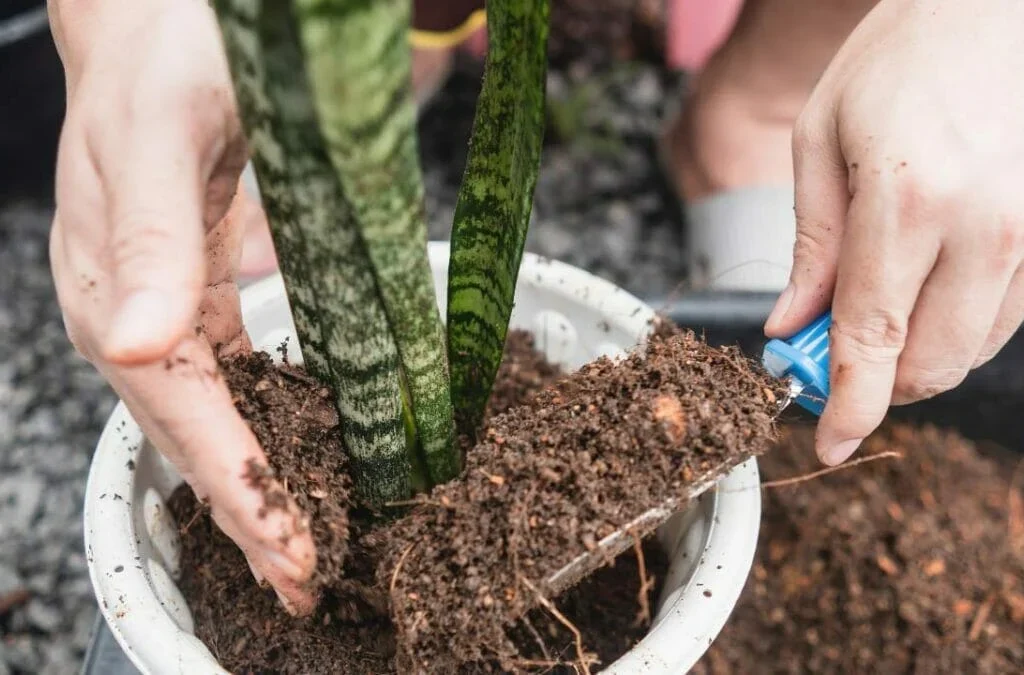
Snake plants need a well-draining, aerated, and light potting mix. The goal is to prevent water from pooling and compacting around the roots.
Characteristics of Ideal Soil:
- Fast-draining
- Slightly sandy or gritty
- Low in organic material that retains moisture
- Neutral to slightly acidic pH (6.0–7.0)
Top Soil Options for Snake Plants
1. Cactus or Succulent Mix (Store-bought)
These mixes are the easiest and most accessible choice. They’re designed for dry-loving plants and contain:
- Sand or perlite for drainage
- Peat moss or coconut coir for light moisture retention
Tip: Always check that the mix doesn’t have too much peat moss, which can compact and retain too much water over time.
2. DIY Snake Plant Soil Recipe
Prefer a homemade mix? Try this custom blend:
- 2 parts cactus/succulent mix
- 1 part perlite or pumice
- 1 part coarse sand (horticultural sand)
This combination offers superior drainage while holding just enough moisture to nourish the roots.
Optional additions:
- Charcoal: Improves drainage and absorbs impurities.
- Worm castings or compost: Adds nutrients in small amounts (optional, especially for potted indoor plants).
What to Avoid in Snake Plant Soil
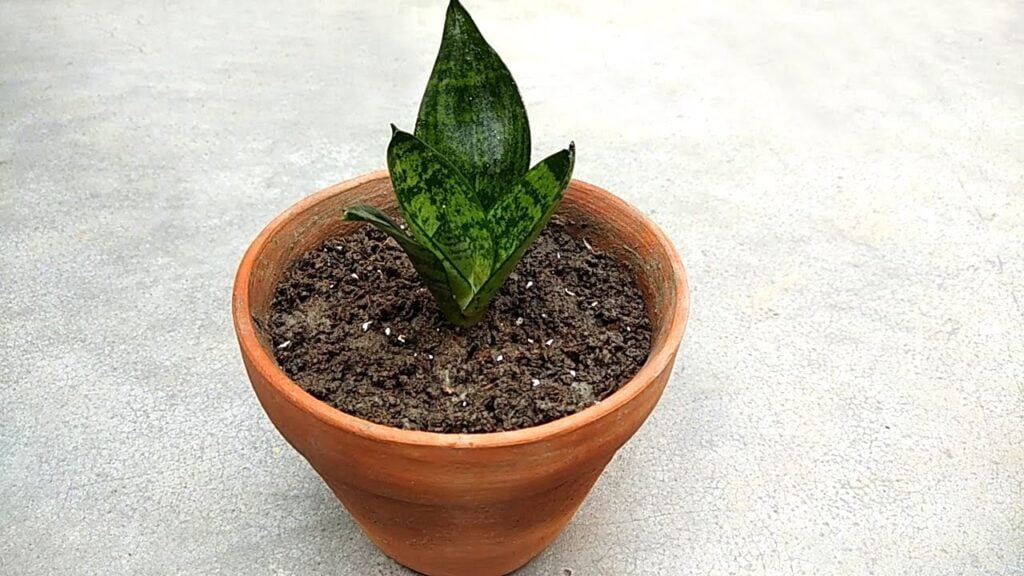
- Heavy garden soil: Poor drainage and likely contains pests or weed seeds.
- Clay-rich soils: Compacts easily and retains moisture.
- Peat-heavy soils: Tends to stay too wet, especially in non-breathable pots.
- Soils with vermiculite: While great for moisture retention in other houseplants, vermiculite may keep snake plant soil too moist.
How to Pot (or Repot) a Snake Plant Correctly
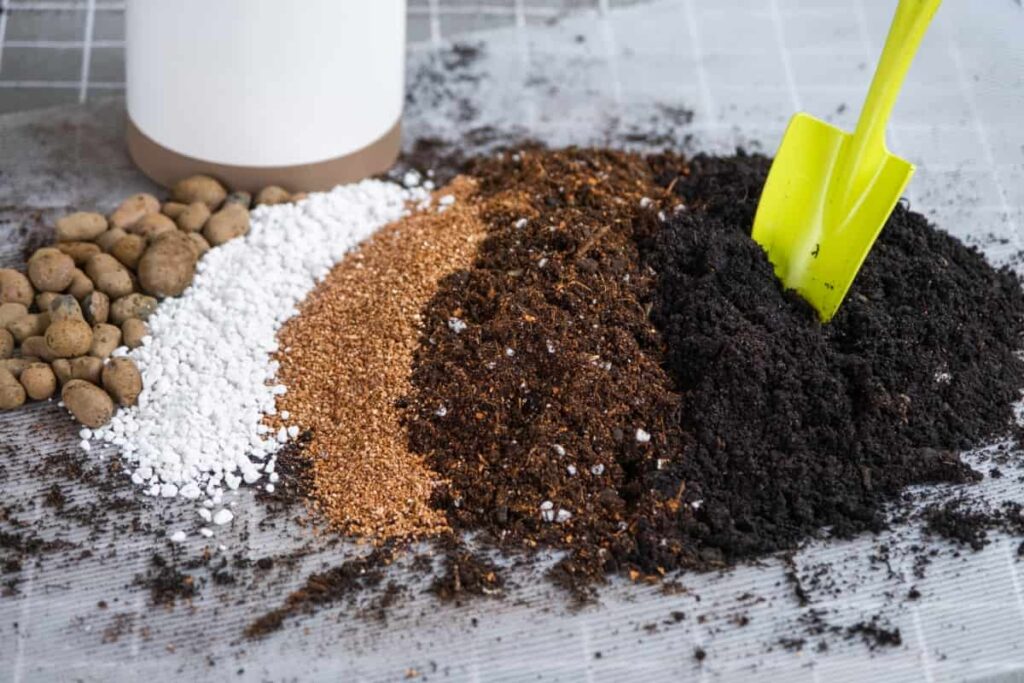
Step 1: Choose a pot with a drainage hole
Step 2: Add a layer of gravel or coarse charcoal at the bottom (optional for extra drainage)
Step 3: Fill halfway with your soil mix
Step 4: Place the snake plant root ball inside and fill in the sides with more soil
Step 5: Tap lightly to settle, but don’t compact the soil too much
Step 6: Water sparingly to settle the roots
Repotting Frequency: Every 2–3 years, or when roots outgrow the pot
Bonus Tips for Thriving Snake Plants
- Water sparingly – Water only when the soil is dry 1–2 inches down. In winter, water even less.
- Light conditions – Snake plants tolerate low light but grow faster in bright, indirect light.
- Fertilize sparingly – Use a diluted succulent fertilizer once a month in spring and summer only.
- Avoid misting – Unlike tropical houseplants, snake plants don’t like high humidity.
Troubleshooting Soil and Pot Issues
| Problem | Likely Cause | Solution |
|---|---|---|
| Mushy, yellow leaves | Overwatering or poor drainage | Switch to faster-draining soil and terracotta pot |
| Stunted growth | Root-bound or compacted soil | Repot and aerate soil mix |
| Fungus gnats | Excess moisture | Let soil dry completely; top with sand or diatomaceous earth |
| White crust on soil | Salt buildup from tap water/fertilizer | Flush soil or repot with fresh mix |
Eco-Friendly Alternatives
Want a sustainable garden?
- Use coco coir instead of peat moss
- Compost small amounts of organic waste to enrich your DIY mix
- Repurpose old ceramic containers with added drainage holes
Final Thoughts
Choosing the right pot and soil for your snake plant is essential for ensuring its long-term health and beauty. With well-draining soil, the correct pot material, and minimal watering, your snake plant can live for years—even decades—indoors. Whether you’re a beginner or a seasoned gardener, investing in the proper growing environment will help your snake plant thrive and multiply with ease.
Happy planting!
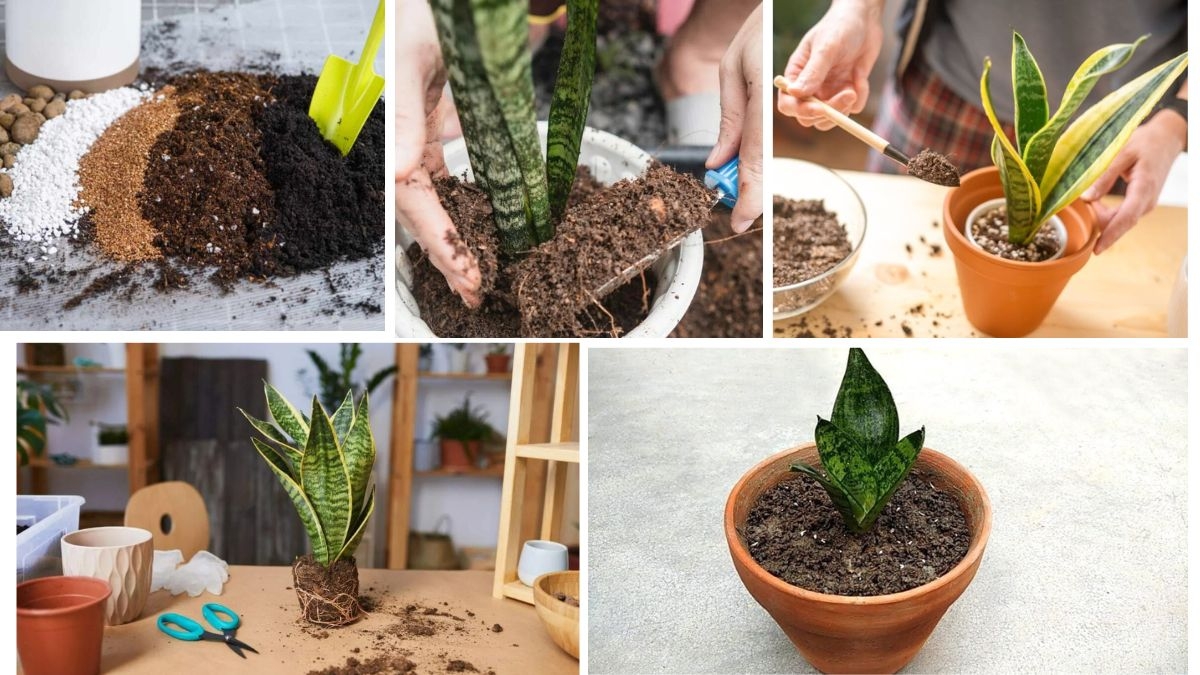




Leave A Comment